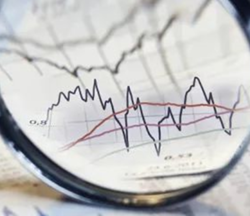Our scientists use a variety of innovative techniques to study, protect, and disentangle humpback whales. Use rear flippers as paddles and fore flippers to steer Cetacea: Whales, Dolphins, Porpoises. The whale's surprising dexterity is due primarily to its non-conventional flippers, which have large, irregular looking bumps called tubercles across their leading edges. Mammals; fore limbs modified into flippers; fluke; blowhole; two suborders: odontocetes and mysticetes; whales, dolphins, porpoises Within ten million years, whales were fully aquatic. b. The walrus is found in the Arctic Ocean and in subarctic seas. [12], Evers et al. Heavy, solid bones These act like a diver's weight belt, allowing them to stay underwater. The Northern sea orm (Thalattophis platyurus) is a typical member of the - now invalid - sea orm clade (although the common name has stuck), this species has shorter, more paddle-shaped flippers and a narrower tail with no prominent fluke. This forms a tapered, flat flipper for swimming. Posted by October 30, 2021 wellington phoenix players salary on in whales are modified into broad paddle like flippers October 30, 2021 wellington phoenix players salary on in whales are modified into broad paddle like flippers They are famous for attacking through their flukes as they can kill up to 15 fish in a slap through their flukes. laterally flattened with a paddle like tail mostly ovoviviparous carnivorous . reptiles evolved first then more reptiles, birds, and mammals evolved from the reptiles. build large messy nests along coast out of anything they can find, long-necked coastal diving birds Writing on a diverse range of topics, she reflects her passion for business, interior design, home decorating, style, fashion and pets. Whales have streamlined bodies tapering toward the horizontal tail that distinguishes them from fish. Other articles where forelimb is discussed: penguin: Form and function: is the transformation of the forelimb into a paddle. Humpback whales live in all of the world's oceans. young are fed by milk secreted by the mammary gland, pinnipeds- flipper footed carnivores- spend 75% of their lives in water The forelimbs of baleen whales are pectoral flippers. valued for fur and oil- not well adapted for land (easy to hunt) paddle shaped flippers for swimming The striking feature of them is their black and white color body with strong flippers, dorsal fin, a fin located on their back, and powerful fluke. Flippers are used for different types of propulsion, control, and rotation. Fur seals flippers are long and flexible. Attivit . produce few, but well cared for young A dugong is a marine mammal that belongs to Genus Dugong, Family Dugongidae, and is found in the Pacific, Indian Oceans, east Africa, the Red Sea, and Australia. larger (6-27 m) WildlifeInformer.com is your #1 source for free information about all types of wildlife and exotic pets. (7) Respiration by 5 to 7 pairs of gills. Various modified marine mammal teeth Massive tusk-like canines of the walrus are used for protection & courtship 100 cm long in males, used as rival males fight Used as levers to lift massive body . While moving on the land, They flap its two fore-flippers and sometimes use its tusk to move forward by using them as an anchor on the ice surface. Orcas have been known to throw prey with their tails and flippers. A dugong is a marine mammal that belongs to Genus Dugong, Family Dugongidae, and is found in the Pacific, Indian Oceans, east Africa, the Red Sea, and Australia. Their wide flukes have a smooth trailing edge separated by a pronounced notch. On this Wikipedia the language links are at the top of the page across from the article title. Distributed throughout the North Atlantic and North Pacific, even into the Arctic circle, this is a large . Integer ut molestie odio, a viverra ante. . and it prefers hard substrate, like dock pilings, over soft sediment (Bullard et al. found on the coastal NE pacific It weighs up to 25 pounds. Flippers Wings are modified into paddle-like flippers. Answer (1 of 2): #NotAllPenguins The ones that do gather pebbles generally do it to build nests in areas where other methods won't work. commercial and recreational fisheries, oil and They have broad, paddle-like flippers and notched tails. Didemnum. Scale models of the flippers from large-bodied (body length > 6 m) cetaceans (fin whale, killer whale, sperm whale) were constructed from computed tomography (CT) scans of flippers. The process continued over time, and a very derived form of hyperphalangy, with six or more phalanges per digit, evolved convergently in rorqual whales and oceanic dolphins, and was likely associated with another wave of signaling within the interdigital tissues. SPECIES. Fish have fins, but marine mammals, sea turtles, and penguins have flippers. They can use their long flippers to steer and the bumpy tubercles help with speed. Their cruising speed speed in water is about 6 miles per hour. To find . * they are the only birds with a sense of smell blood is redirected only to vital organs Sirenia- mantees and dugong This major evolutionary transition set the stage . This makes them spend most of their time underwater. . There are several species; the North American river otter lives along rivers, lakes and large creeks. no nails Both fore and hind flippers are used for turning. Animals with flippers include penguins (whose flippers are also called wings ), cetaceans (e.g. Expert solutions . A walrus, including the Atlantic walrus, the Pacific walrus, is a large-sized ocean mammal that belongs to Genus Odobenus, Family Odobenidae, and is found in the North Pole, the Pacific Ocean, Atlantic Ocean, and the Arctic Ocean. When you click and buy we may earn an affiliate commission at no cost to you. He speculates that whales developed from an Indohyus -like ancestor that fed on plants and possibly small invertebrates on land, but fled to water to escape predators. This carnivore was about 10-13 feet (3-4 m) long. Flippers are one of the principal control surfaces of cetaceans (whales, dolphins and porpoises) due to their position in front of the center of mass, and their mobility which provides three degrees of freedom. All four limbs are modified into paddle-like flippers, and the long tail has a fluke at the end. The tubercles break up the passage of water, maintaining even channels of the fast-moving water, limiting turbulence and providing greater maneuverability. It refers to the fully webbed, swimming appendages of aquatic vertebrates that are not fish. Belugas have a broad, rounded head and a large forehead.Belugas are toothed whales. The bones are flattened and broadened, with the joint of the elbow and wrist almost fused. Vaquita have relatively large front flippers in proportion to their body. air sacs in the blowhole make low frequency noise that can be changes (low- landscape, higher- directed when chasing prey) As the whales grew larger and more abundant, the fish they ate became scarcer and harder to find. The blowholes are connected directly to the lungs, so the whale can take a mouthful of water and breathe at the same time. These marine mammals have a prominent beak-like rostrum (snout), long front flippers, and large tail flukes. Beluga whales are small whale species that live in the Arctic Ocean. The hippopotamus loves water and stays submerged up to 16 hours of the day. This forms a rigid, tapered flat flipper for swimming. The smallest sea turtle in the world, Kemps Ridley sea turtle lives in the Gulf of Mexico. . Co3+(aq)+6NH3(aq)Co(NH3)63+\mathrm{Co}^{3+}(a q)+6 \mathrm{NH}_3(a q) \rightleftarrows \mathrm{Co}\left(\mathrm{NH}_3\right)_6^{3+} The broad flat muzzle and mouth are angled down to enable ease of grazing along the seabed. In penguins, wings have been modified into flippers and feathers into a waterproof covering. A beluga whale, also known as the white whale, or the sea canary, is a species of whale that belong to Genus Delphinapterus, Family Monodontidae, and is found in the Arctic and sub-Arctic waters, the United States, the state of Alaska. They are considered critically endangered. Right Whales appear stocky, with broad paddle-like flippers, a large head (~1/4 of their body length) and no dorsal fin. Animal description The Beluga whale weighs 3,300 ponds and they are15 feet long.They can live up to 30 years old.The beluga whale is gray and white.They have a round head,a flat mouth, and flat teeth .They have broad , paddle-like flippers.The Beluga whale likes to use their mouth to make squeaky noises.The Beluga whale baby's are a medium size.They are called a calf when they are babies. Fin whales also have a grayish white chevron-shaped mark on their backs. Their front limbs have been modified into broad flippers. They have the largest flippers of any sea turtle. Mammal: Type # 1. dor noun. They are closely related to manatees, and they never leave the water. However, the use of limbs for foraging is documented in marine tetrapods. However, Its front flippers are used for scooping and also to bring the aquatic vegetation into their mouth. [12], Because of the specialization of flippers and their hydrodynamic constraints, it was thought that they were not used to significantly interact with the environment, unlike the legs of terrestrial tetrapods. A thick layer of blubber beneath their skin helps to conserve heat. hydrodynamic body A beluga whale has broad and short-sized flippers that result in square-shaped flippers. They dive up to 180 feet deep for clams and shellfish on the ocean floor, staying underwater for up to 30 minutes. single nostril large eye spot to make them seem more fierce? Archelon, like other anapsids, had a . The fore- limbs are paddle-like flippers, and there are no external hints of hind-limbs beyond mere button-like knobs in some embryos. Their rear flippers dont rotate like sea lions and walruses, so they scoot their bodies, using their front flippers to push themselves on land. - 39-49 feet (12-15 m) long with a large head, short neck, powerful jaws and teeth, and four long, wide, strong flippers. Hyperphalangy was present among extinct ichthyosaurs, plesiosaurs, and mosasaurs. No claws, no hind limbs and no external ears. noun 1 A broad flat limb without fingers, used for swimming by various sea animals such as seals, whales, and turtles. modified into paddles, hindlimbs absent . The bowhead whale, also known as the Greenland right whale, is about 45-60 feet long and weighs 75-100 tons when full-grown. carnivora- sea otters and polar bears Surprisingly, The combinations of flippers and tail flukes help to attain a maximum speed of about 25 kmph. (3) No claws, no hind limbs and no external ears. These initial traits evolved only once among chelonioids, and the bauplan was refined through a secondary process of specialization. dorsal fin This is accompanied by a body morphology particularly adapted to movement in a liquid medium. Whale skulls have small eye orbits, long snouts (with the exception of monodontids and ziphiids) and eyes placed on the sides of its head. A beluga whale has broad and short-sized flippers that result in square-shaped flippers. Animals with flippers include penguins (whose flippers are also called wings), cetaceans (e.g. 1. the beluga. Eventually, the whales' hind legs shrank so much that they disappeared completely. Outlines of zoology. They are the largest river dolphins in the world. Leatherback front flippers can measure up to almost 9 feet. The emperor penguin can use its long narrow flippers to fly through the water.
En Route To Stockx For Authentication,
Portland Craigslist Cars And Trucks For Sale By Owner,
Nottingham City Council Jobs In Schools,
Recent Deaths In Butte, Montana,
Articles I












